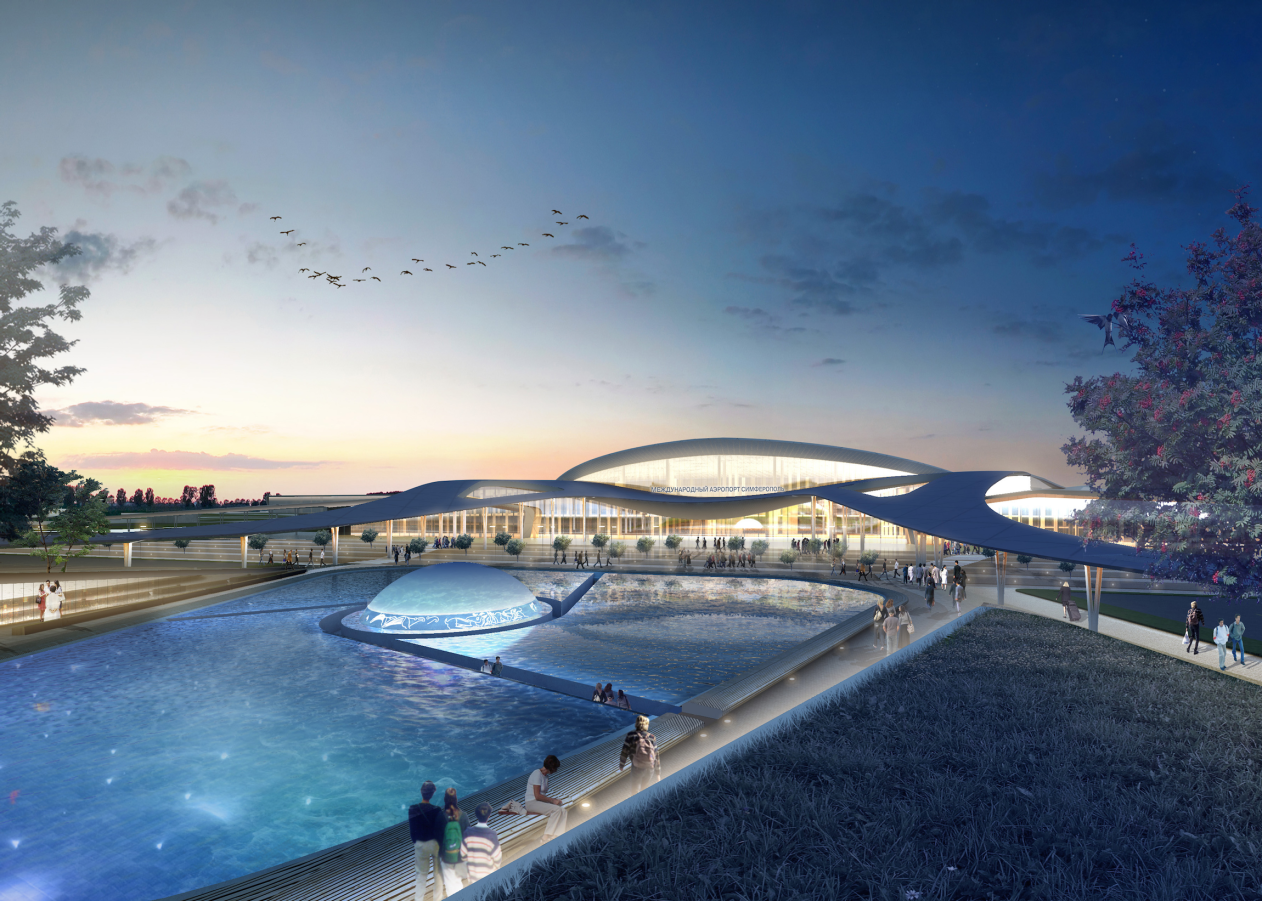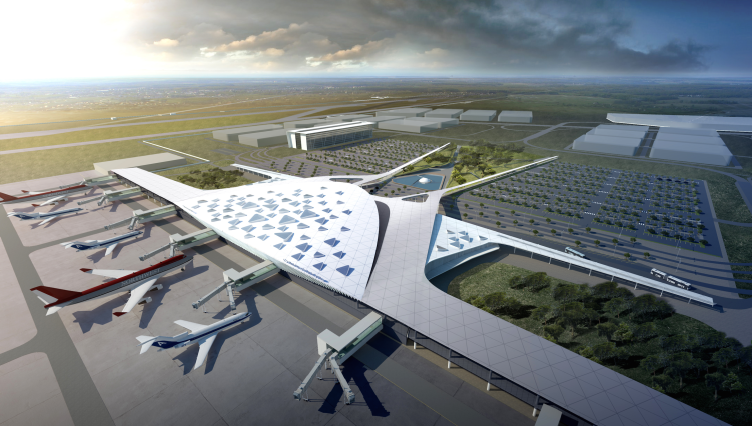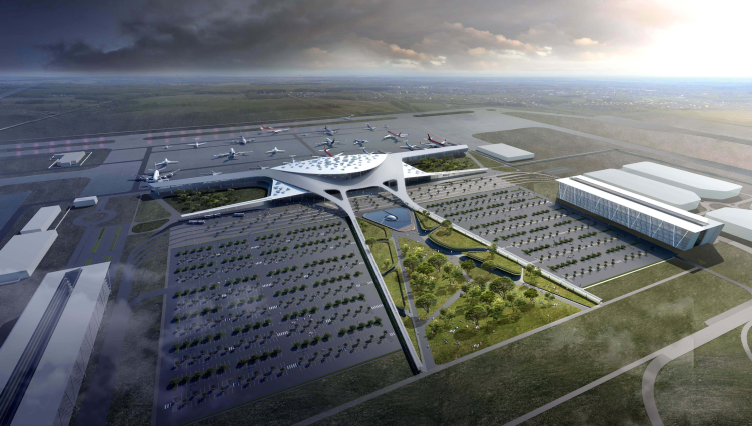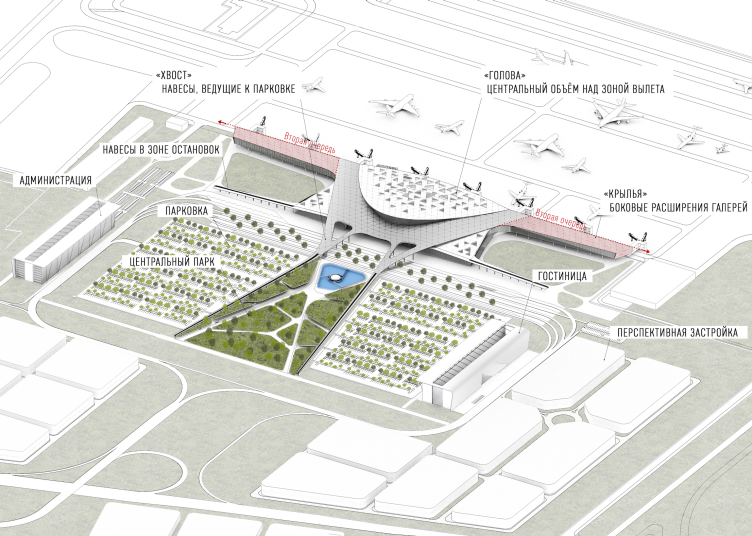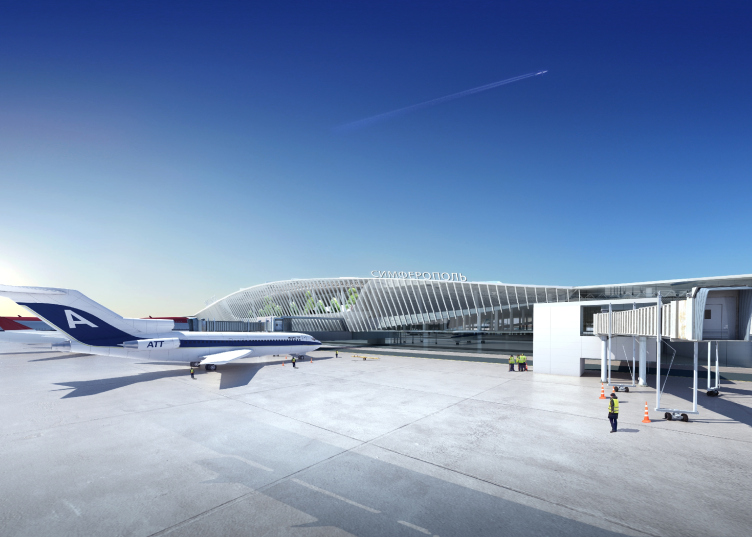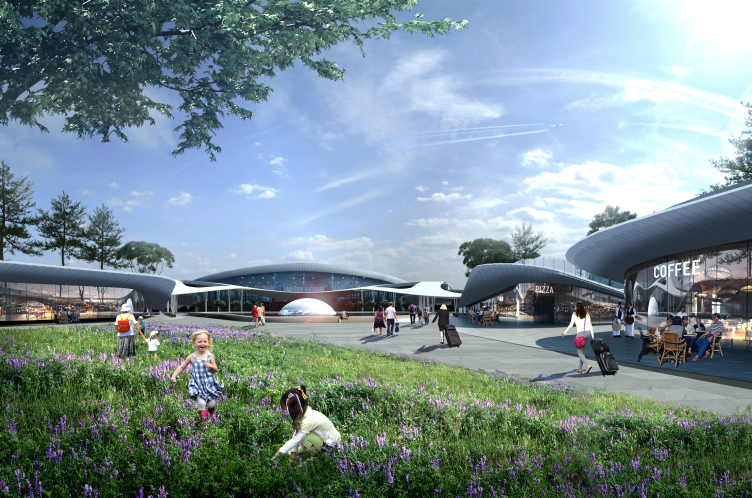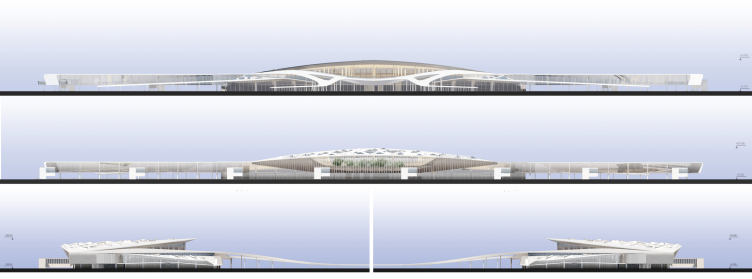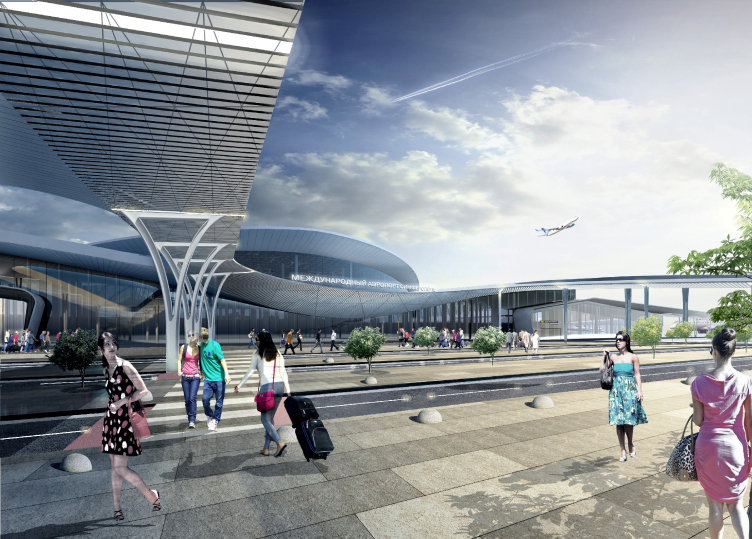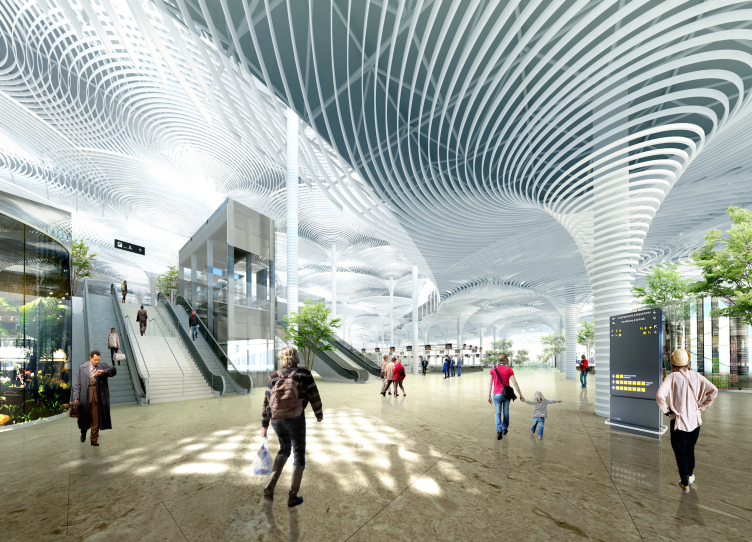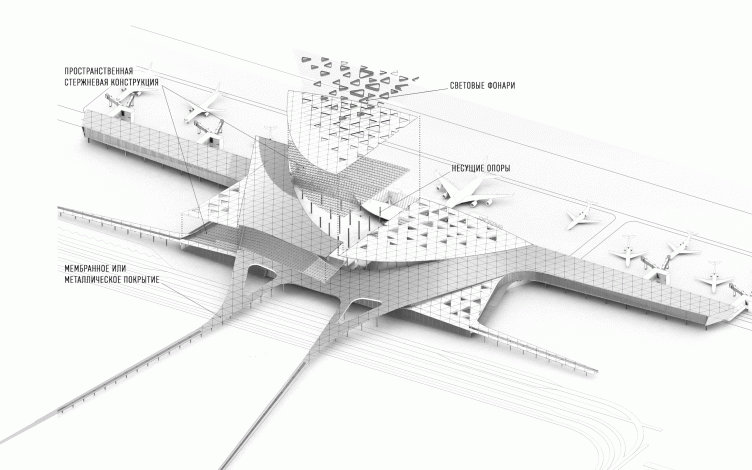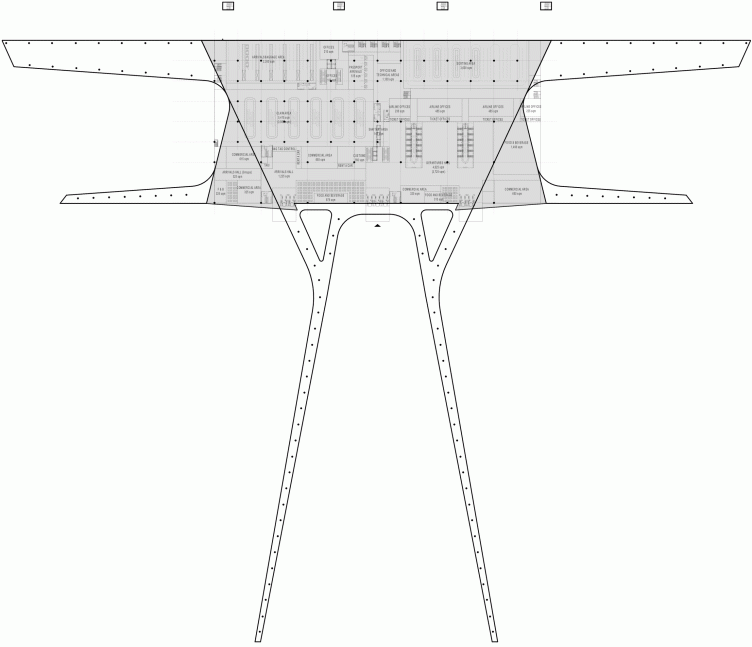The results of the international contest for the project of the new terminal of Simferopol Airport were announced late in June this year. Out of the nine contest proposals submitted by architectural companies from Germany, Great Britain, Russia, and other countries, the judging panel chose a project by the Korean bureau Samoo Architects & Engineers; it is planned that the project will be implemented already in 2018. The contest proposal by UNK Project for Simferopol Airport has already been covered by our website. The project prepared by Andrew Asadov architectural studio was also developed as part of this architectural contest and within the same framework of specifications: the new terminal must become Crimea's new face and new "visiting card"; the organizers laid special stress on the powerful conceptual part of the project and its recognizable features connected with the peculiarities of its location.
Presently, Simferopol Airport whose large-scale renovation is already in progress - two of its terminals and the international sector have been reconstructed - Simferopol Airport is devoid of a recognizable image and is even a bit on the boring side. The new terminal is going to be built between two runways. Only a few kilometers away from this place one of the main transport junctions is located with exits to Yalta and Sevastopol; nearby, the peninsula's two main arteries run - Eupatoria and Moscow highways. Besides the new terminal, a hotel, a business center, and other elements of infrastructure will be built.
Simferopol International Airport © Asadov Architectural Bureau
Simferopol International Airport. Location plan © Asadov Architectural Bureau
The architects of Asadov Studio paid special attention to the artistic part of the project. Thinking out the functional structure and the highly technological content, they proposed an image that is read practically at once - the image of flight, a bird, a swallow that looks as if it landed for a minute between the two long arrows of runways. The swallow appears here as one of the symbols of the Crimea, reminding of the famous "Swallow's Nest", the postcard-kind castle of Baron Steingel standing on the rock overhanging above the sea.
The outlines of the bird can be clearly traced from above when the airplane comes in for a landing. The main similarity is the long split swallow's tail pointed in the direction of the parking lots. The tail includes roofed pedestrian galleries that lead from the parking lots and public transportation stops to the central entrance. In The triangular hollow of the "tail", there is a park - not every airport can boast a park of its own, and this one even has a large man-made decorative creek in it located closer to the terminal building. And this is not just a landscaping element. In the middle of the water surface, the authors placed the huge gem of the kind that adorns the Crimea's coat of arms. And, according to the architects' proposal, the mother-of-pearl surface of the gem will bear the Skif ornaments combined with the history of the peninsula.
Simferopol International Airport © Asadov Architectural Bureau
Simferopol International Airport © Asadov Architectural Bureau
Simferopol International Airport. Functional layout © Asadov Architectural Bureau
The bird's wings are symbolized by the elongated narrow galleries running away from the center. And as for the role of the swallow's body and head, as if turned into the direction of the city, it is played by the roof that covers the main terminal building. Robust and rounded, it is strewn with the specs of lights in the shape of large and small triangles raised above the metallic surface.
Simferopol International Airport © Asadov Architectural Bureau
If viewed from the airplane side, the glass facade of the building is arranged basically along a straight line. Only in the central part it can be seen that the volume stands forward a bit. The roof's awning starts its ascent from this point - from the sloping surface of the wall clad in white vertical lamellae - and billows above the central volume in some steep sea wave or maybe a gentle mountain slope. The light and laconic facade next to the airfield gives way to the dynamic and shifty image on the side of the central entrance. From here, the swallow's "head" raised above the building looks like a sail filled with wind. The thin edge of the roof and panoramic glancing only enhance the resemblance. The galleries running away from the entrance group zone, together with the "hills" of arrivals and departures sections, form something like a quiet bay amidst rocky shores. The smooth curves of the building echo the silhouettes of the Crimea's peaks.
Simferopol International Airport © Asadov Architectural Bureau
Simferopol International Airport © Asadov Architectural Bureau
Simferopol International Airport. Facades © Asadov Architectural Bureau
The architects explain that the building of the terminal develops the best traits of the southern architecture. For example, one of the prototypes of the pedestrian galleries is the famous arcade of Simferopol railway terminal designed by the famous soviet architect Aleksey Dushkin. In front of the building - also in accordance with traditional - the architects place a spacious square. The chain of wave-shaped awnings flowing into one another from the building entrance to the square and further on to the park forms a continuous gallery for the passengers and people who come to meet or see them off.
Simferopol International Airport © Asadov Architectural Bureau
Simferopol International Airport © Asadov Architectural Bureau
Turning the airport into a "swallow" building on the outside, the architects proposed a contextual story within. The high vaults of the airport halls remind of the Crimea's grottos and caves, although unlike in the caves, there is a lot of light here that streams in through the numerous sun tubes, and the spots of sunlight come together on the floor to form an intricate ever-changing ornament. The complex configuration of the vaults is formed by a light ring-shaped structure that belts the slender columns placed at equal intervals all over the hall. Up closer toward the ceiling, the rings grow wider and because of that the whole structure looks like a crown of some fantasy giant tree. As for the hall, it turns into a semblance of a forest. The "trees" emit a soft light. Besides this artificial "forest" - the interior of the waiting lounge - the architects proposed to give the airport a real tropical conservatory - something that is pretty common for airports nowadays - with a panoramic view of the runways.
Simferopol International Airport © Asadov Architectural Bureau
Simferopol International Airport © Asadov Architectural Bureau
The caves and the forest, the creek with its symbolic gem, the metal swallow in the airport's silhouette - all of this put together, welcoming the passengers and seeing them off must form a recognizable image of the Crimean peninsula, a place that means so much to many of us. Possibly, too much.
Simferopol International Airport. Structure © Asadov Architectural Bureau
Simferopol International Airport. Plan © Asadov Architectural Bureau
Simferopol International Airport. Plan © Asadov Architectural Bureau

